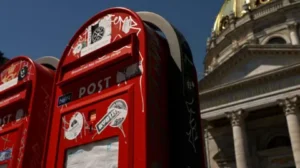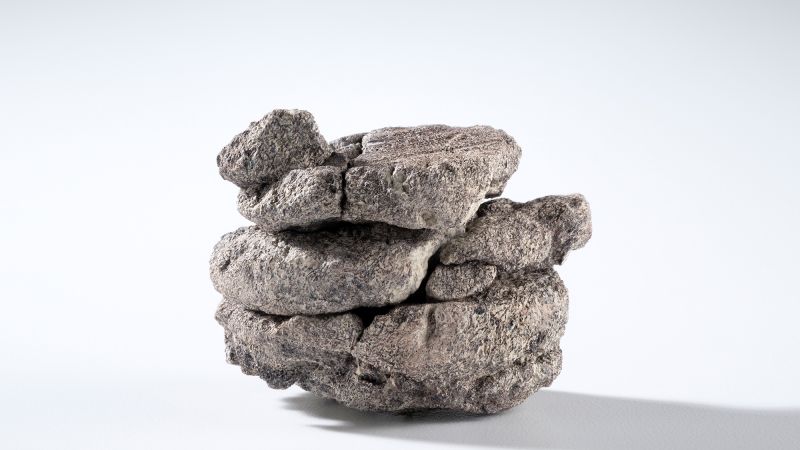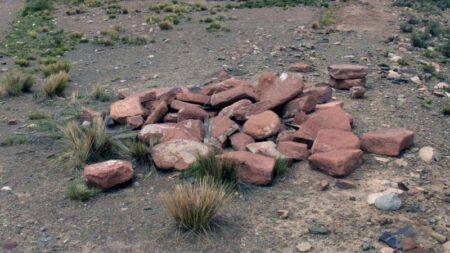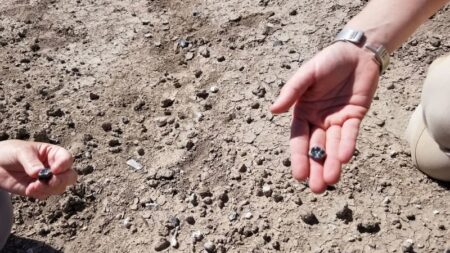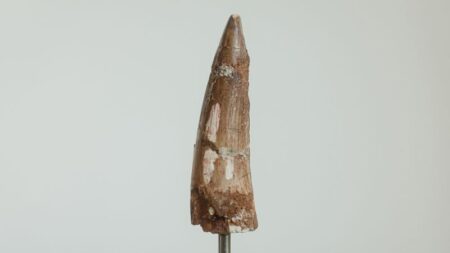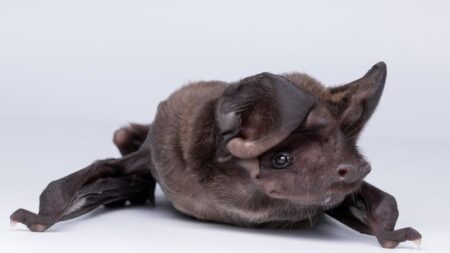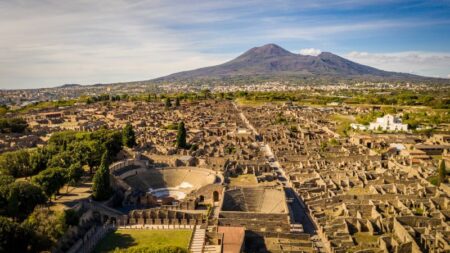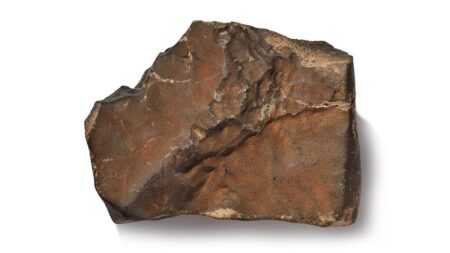Paleontologists at the Denver Museum of Nature and Science have recently redefined the phrase “leave no stone unturned,” encountering thrilling discoveries right under their feet. The museum revealed the find during a drilling project undertaken to investigate the layers of rock beneath its parking lot. This project, which commenced in January, aimed to gather information about the geological composition below the surface. Surprisingly, during the extraction of an Earth core sample, researchers unearthed a remarkable fossil – a partial vertebra belonging to a plant-eating dinosaur that roamed what is now Denver more than 67 million years ago.
The fossil was discovered at a depth of approximately 760 feet (about 230 meters), making it the oldest and deepest dinosaur fossil ever found within the city limits of Denver. Measuring around 2.5 inches (6.4 centimeters) in diameter, this disk-shaped specimen has generated considerable excitement among scientists, even though a lack of additional material inhibits precise identification of the dinosaur’s species. Dr. James Hagadorn, the museum’s curator of geology, pointed out that the find adds a vital piece to the puzzle of the Cretaceous period ecosystem that existed in the area.
Although experts are unable to determine the exact species of the fossilized remains, they have classified the vertebra as part of a group of herbivorous dinosaurs known as ornithopods. Notably, this discovery marks the first instance of an ornithopod being found within Denver’s city limits, a finding that has filled a significant gap in regional paleontological knowledge. As Dr. Hagadorn noted, while similar dinosaurs were previously documented in other parts of Colorado and Wyoming, the presence of ornithopods in Denver had remained unconfirmed until this discovery.
Excitement surrounding this new dinosaur addition has led to the specimen being put on display at the Denver Museum of Nature and Science. This institution boasts an impressive collection of around 115,000 fossils from dinosaurs, plants, and mammals. Given that only two other such instances exist globally, Hagadorn believes that this particular vertebra represents the first dinosaur bone recovered via core sampling to be publicly exhibited.
As it stands, larger portions of the ornithopod fossil remain buried deep within the museum’s parking lot, which poses practical challenges for excavation. Dr. Hagadorn emphasized the importance of maintaining parking facilities for museum visitors and cultural centers, thereby limiting the scope for deeper excavation of additional fossils. Nevertheless, this serendipitous find means that visitors can now claim to park over a dinosaur – an interesting twist for patrons at the museum.
The fossil discovery aligns with ongoing research interests, as the original drilling project sought insights into the potential transition to a geothermal energy system, replacing reliance on natural gas. So far, researchers still have about 1,000 feet of extracted rock core material to analyze, which might reveal further fossils or geological structures not visible on the core’s outer surface. The insights garnered from this analysis could illuminate a more comprehensive understanding of the region’s geology, environmental factors, and even the occurrence of drinking water.
Interestingly, locating a dinosaur fossil amidst such an investigation was unexpected. Dr. Hagadorn likened this rare find to a “lucky strike,” akin to hitting a bullseye from a remarkable distance. Through the decades, dinosaurs have been less commonly apprehended amid urban development, but this discovery underscores the still-untapped potential for fossil recovery, particularly amidst urban landscapes like Denver.
This research effort opens up pioneering avenues for understanding the history of prehistoric life in a city that seems an unlikely location for such discoveries. Dr. Paul Olsen, a paleontologist from Columbia University, noted that dinosaur fossils are not as rare as presumed and can surface in urban environments where underlying geological materials are accessible for analysis. Such continual exploration makes it likely that other significant discoveries await.
The importance of analyzing rock core samples post-discovery helps scientists examine the geological layers that characterize former environments millions of years ago. Colorado’s rich geological tapestry serves as an optimal location for Cretaceous fossils, which are preserved from damaging volcanic events. The Denver Museum’s recent finding prompts a renewed interest in cataloging fossil locations within the Denver area, enhancing knowledge about the rich history of prehistoric life there.
As research progresses, the incorporation of advanced mapping technologies and geographic information systems allow specialists to date fossils with greater accuracy than in the past. This enhances the understanding of fossil distribution and ecosystem evolution, fostering deeper insights into climate change, mass extinctions, and various timeframes within Earth’s expansive history. The ongoing studies lend humanity a contextual grasp of its position within the vast timeline of existence, illuminating how life has thrived and transformed on Earth.
As research continues in the pursuit of understanding the past, the unexpected unveiling of the ornithopod vertebra serves as a testament to the constant interconnectedness of our urban environments and the natural history beneath them, emphasizing that exploration continues to yield fascinating finds in the most unexpected places.



